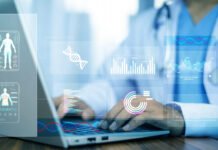Table of Contents
1. Identify Specific Objectives for Customizing Your HR Platform
2. Involve Key Stakeholders
3. Future Needs
4. Strive for Simplicity
In the current, ever-evolving scenario of HR technology, having a robust, customizable HR platform is a need. HR platforms, also referred to as human resources management systems (HRMS), offer comprehensive solutions for HR and talent management. This article explores the depths of each practice that can be done to customize your HR platform.
Whether you’re an organization aiming for rapid growth or an established firm striving for increased efficiency, these practices will help you harness the full potential of your HRMS, efficient HR process that meets the specific business requirements.
1. Identify Specific Objectives
Moving forward, the first step should be identifying your HR and business objectives. What do you expect out of this customization, and in what ways will it make your HRMS better? Setting a clear view of goals will help you customize your process, ensuring that the changes you make to the management system are particularly purposeful and strategic. Thus, defining your goals will let you contribute to these goals to get the maximum effect and value for the company with the help of the software. Guide you in improving employee engagement, streamlining onboarding, reporting, or any other specific objective that aligns with your business goals.
2. Involve Key Stakeholders
A collaborative effort is essential for the successful customization of an HR platform. Thus, it is important to engage relevant stakeholders in the organization, including HRs, IT specialists, and managers, in order to ensure that the approach to developing customized systems meets the expectations of various departments in the organization. Engaging these stakeholders in the discussions helps the organizations get more input and better feedback on the changes proposed. Not only does it assist with the process of customization, but it also assists with ownership and encouragement by the stakeholders.
However, HR management systems are not just limited to the alignment of objectives; they also guide in recruiting and applicant tracking. Installation of a customized HRMS provides employees with self-service options within the HR platform, which helps them simplify workforce management and access performance review information independently.
It ensures the enhancement of human capital management but also aligns HR payroll and employee performance with the organization’s strategic objectives, which makes it a comprehensive solution for your entire HR department.
3. Future Needs
When configuring your HR platform, it is essential to think ahead to your future needs. Such planning guarantees that your human resource management system is capable of accommodating growth and change in the necessary functions for managing talent.
For instance, when customizing HRMS, anticipating future growth and scalability needs is crucial. As your organization evolves, your HR system should adapt and scale with it. You may need additional tools to manage your growing workforce more effectively.
Think not only about the current HR demands that your company has but also about the future ones that could appear when the company will be, for instance, three times larger than it is now. This may refer to functionalities that allow for accommodating more people, cross-cultural teams, or complex analytical tools, among others. These cloud-based solutions include modules in human resource management, particularly in software, payroll, and performance management services to facilitate HR processes.
In effective customization, it is not a question of satisfying current requirements but ensuring that a system is developed that is capable of being adapted to change over the future of the organization. Flexibility or scalability is very important when it comes to HR systems, thus ensuring that they address changing business needs and help HR management as well as employee learning and development. This future-focused approach ensures that your special HR system remains a strategic asset of your business as it grows.
4. Strive for Simplicity
While looking for the ultimate in HR system customization, one should try to achieve simplicity. While considering customization features, focus on those that are closely related to the strategic goals of your organization and avoid integrating anything that might complicate the system.
However, one has to be very careful about how specific the processes need to be because over-customization of the system can result in its complexity and therefore make it less efficient to use. Constantly compare and adapt your changes; declutter the features that are not useful to the business anymore or the ones that only add unnecessary complications.
This way, you avoid overcomplicating your HR system, thereby maintaining its usefulness and utility in relation to your business objectives.
In the continuously changing world of HR tech, a customizable HR platform is your ace in the sleeve. Start with clear goals, involve all major stakeholders, and think in terms of the terms of the future.. Keep it simple to avoid unnecessary complexities. Following these best practices will mean that you make your HRMS flexible, scalable, and supportive of business needs and growth. Adopt the customization with thought and make your HR platform an asset that drives success for your organization.
Explore HRtech News for the latest Tech Trends in Human Resources Technology.












